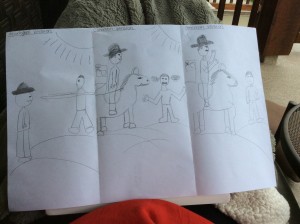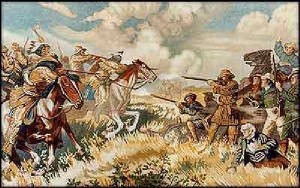1)How were Aboriginal people depicted in early accounts of the fur trade?
Aboriginal people trade with Europe, they can no longer provide for themselves with out the help of the Europeans. They trade with the Europeans for technology and supplies.
2) What does newer evidence show to be more accurate about Aboriginals in the fur trade?
There was no evidence but the tendency for Indians to depend on these traders, and the risk that the trader was taking was similar to what the Indians were taking. If shipping fails and they become dependent on the resources of there country.
3) In what ways did Europeans adapt to Aboriginal economic traditions?
Europeans were forced to bargain within Aboriginal terms, and give fights as a central part of the trading process.
4) Why did Europeans have to adapt to Aboriginal commerce?
Behaviour of Aboriginal people was not that different from the behaviour of the Europeans who were profit-driven and market-oriented.
5) How would you characterize Cree and Assiniboine economic ability and methods?
The Cree and Assiniboine have the ability to absorb different habitat zones, compromise the new ideas, methods, ands technology this allowed them to turn the economic system.
6) After 1670, how did the Cree and Assiniboine show their economic flexibility?
Both the Cree and Assiniboine groups were tired from going east as trappers in the French/Ottawa system of trade, these groups quickly assumed the role of middlemen in the HBC trade. They then pushed their trading and trapping areas northwest with the help from the Europeans.
7) How would you describe the Cree and Assiniboine inland trade strategies?
The Cree and Assiniboine kept taking over control of the inland York Factory trade, They created a trading blockade and monopoly of the trade, they would trade with interior groups as there strategies.
8) How and why did the Aboriginal middlemen’s role change in the late 18th century?
Cree and Assiniboine began to move towards the south as a result of changing economic orientation. The trading houses were established in the parkland and the plains to easily receive and store the pemmican, grease, and dried meat.The Aboriginals began to serve the food for trading companies.
9) How did the Cree and Assiniboine retain independence from European technologies?
They needed a variety of metal goods that the Europeans had, they placed a higher price on cloth and blankets that the different people living in the parklands and grasslands.



